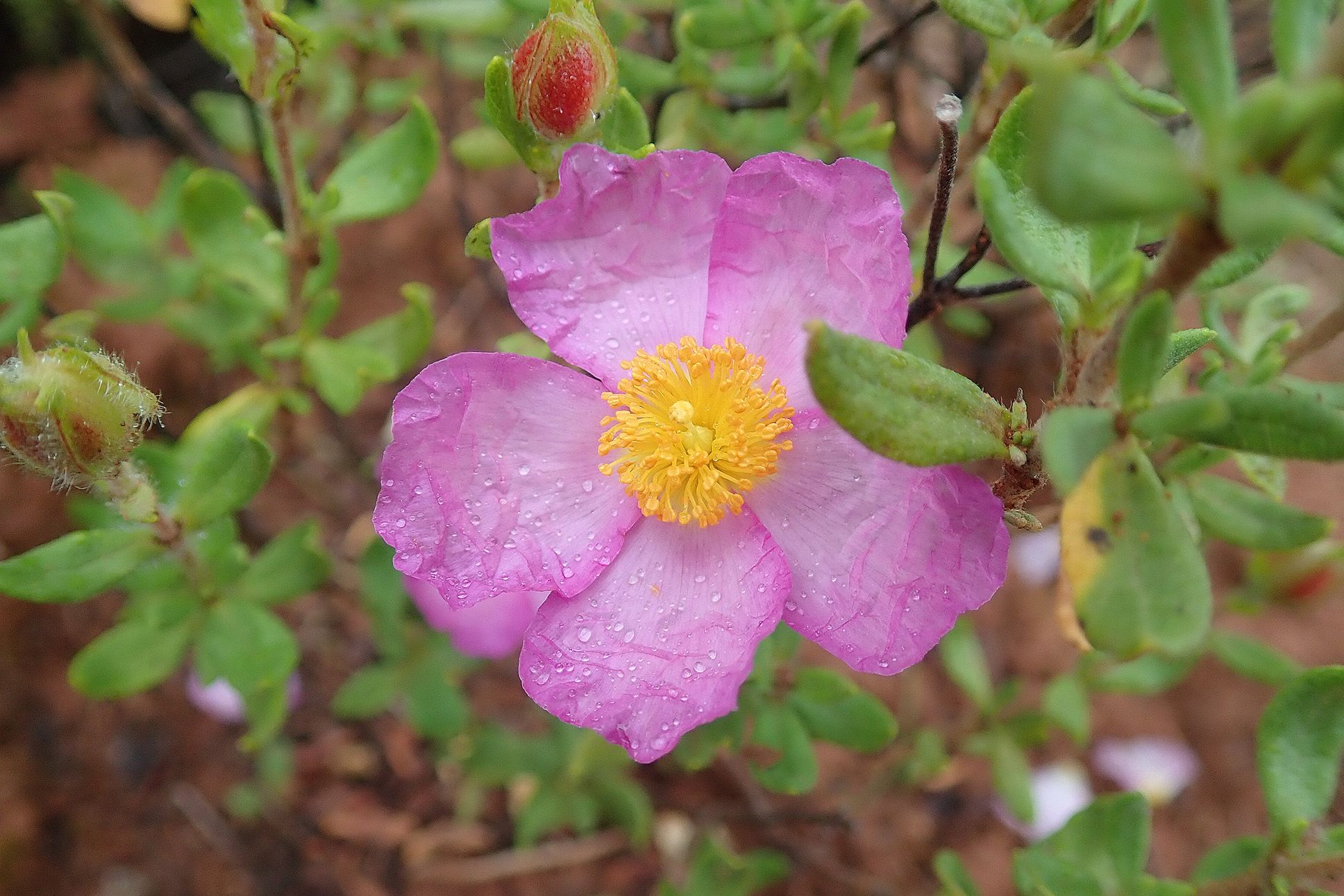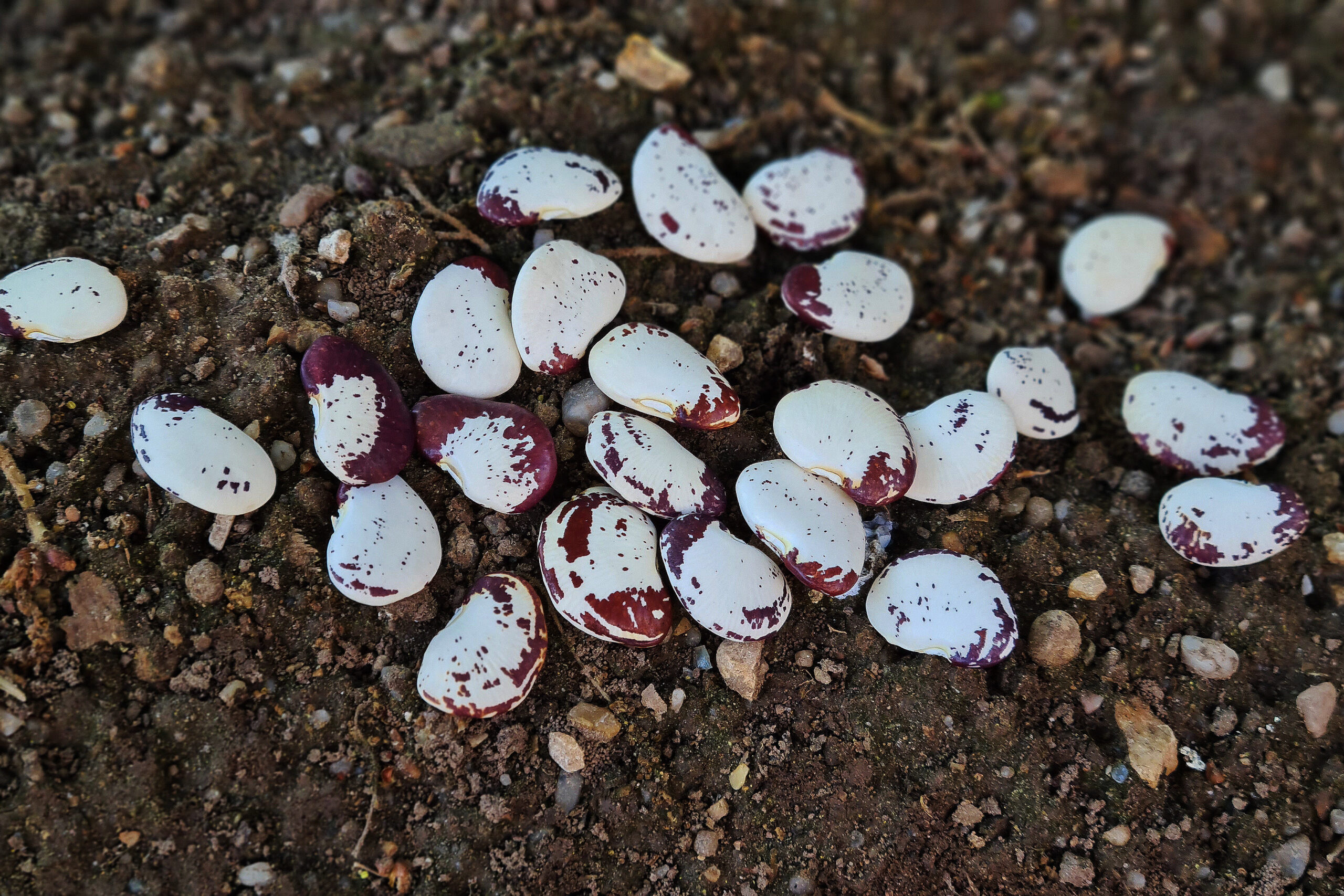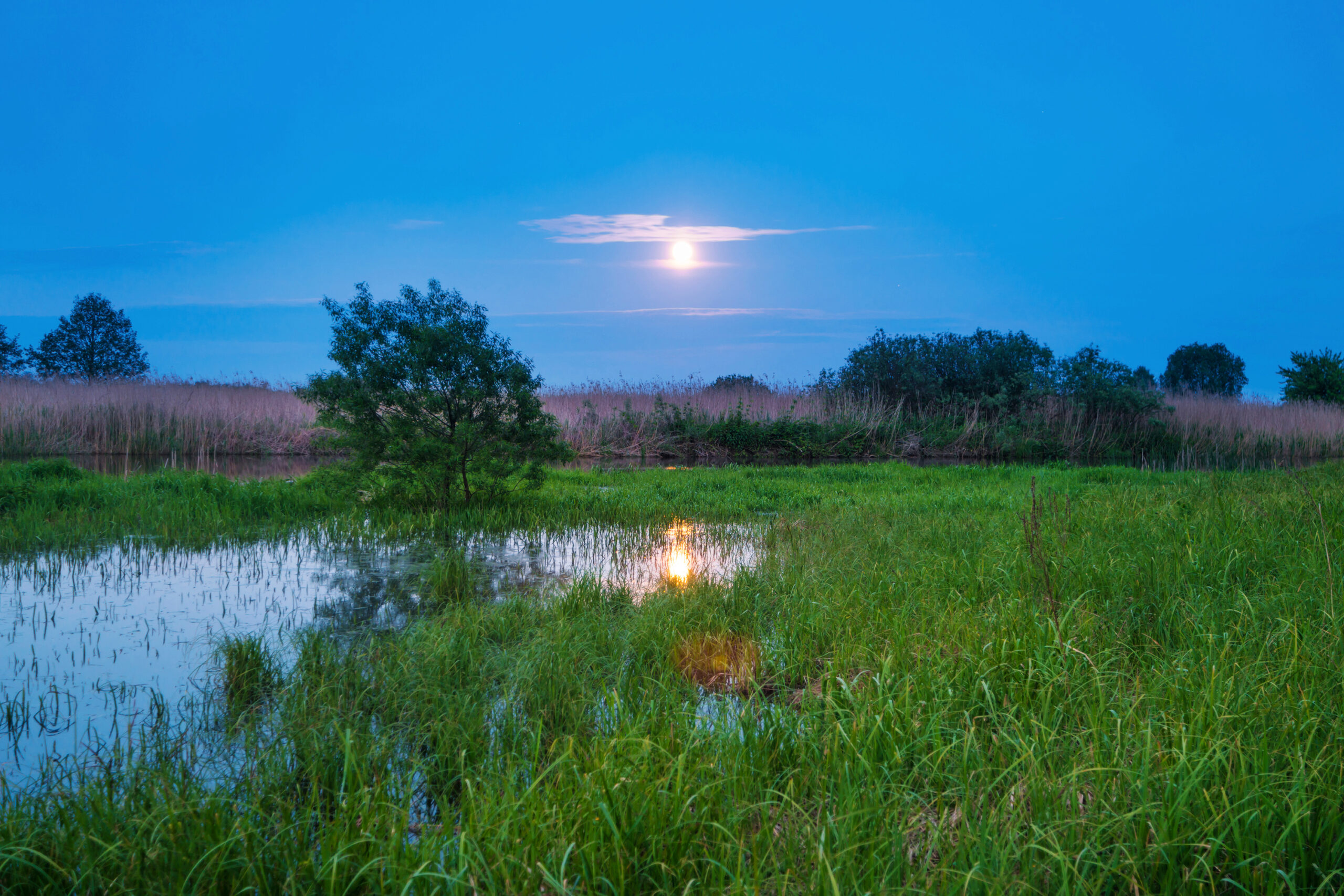The 15 trees of the Jardí Botànic team

Brachychiton discolor
On the Dia de l'Arbre occasion, celebrated last Sunday 31.01, part of the Jardí Botànic de la Universitat de València team made a selection of its favorite species. In this Espores journal article, we share photographs and information about the 15 selected trees.
1. Southern live oak
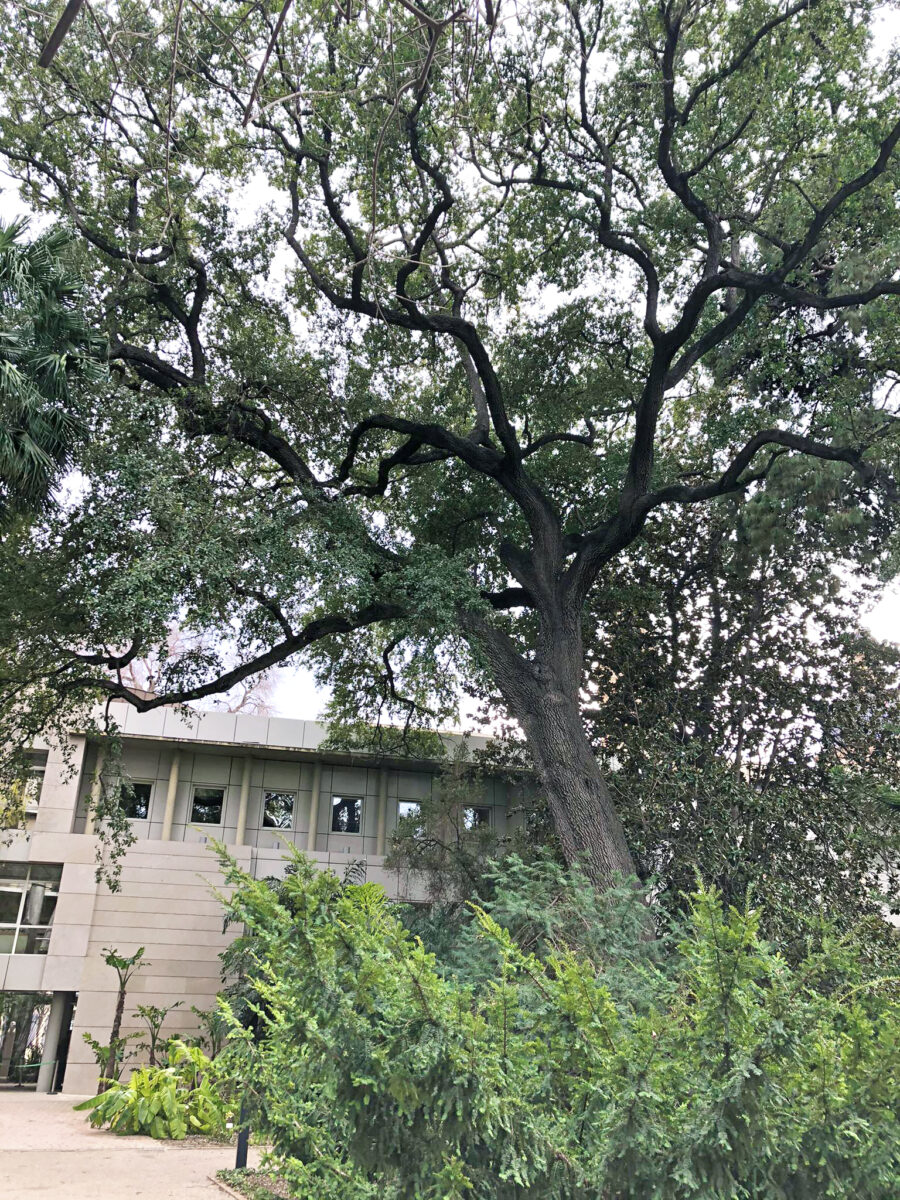
The Jardí Botànic deputy director, Olga Mayoral, also a Departament de Didàctica de les Ciències de la Facultat de Magisteri professor, has chosen Quercus virginiana. It is a classic of the Jardí, a fantastic exemplary, and a warm welcome. Furthermore, the Southern live oak is a reference species in US cinematography.
2. Quercus sp.
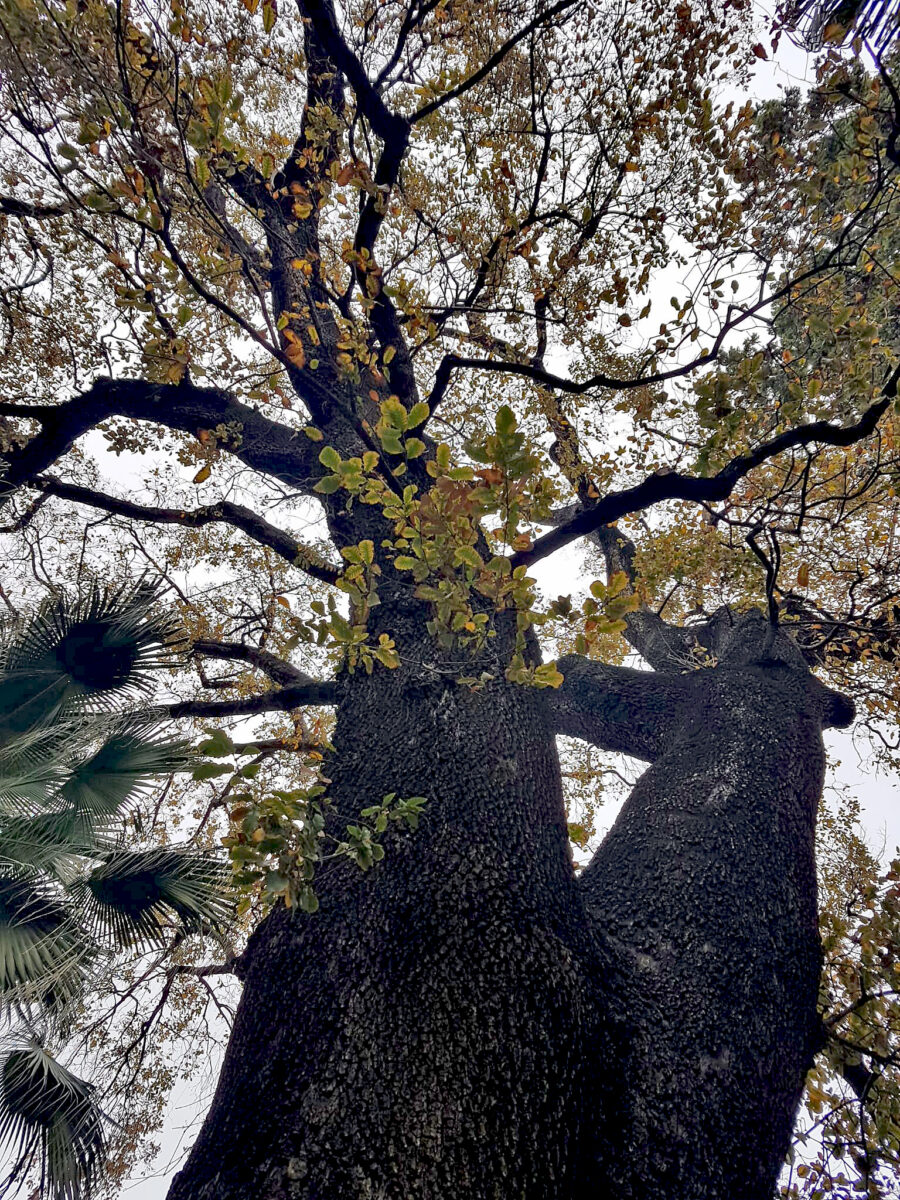
This specimen of Quercus sp. is one of the monumental trees of the Jardí Botànic with more natural growth. Marta Muñoz, our agricultural engineer who is specialized in arboriculture, highlights its vitality, seniority, and structural architecture, typical of mature development.
3. Quercus rotundifolia Lam. Neotype

Jesús Riera and Javier Fabado, the conservatives of the Herbari, selected the Quercus rotundifolia Lam. Neotype, collected in Ragudo de l’Alt Palància. It’s our “carrasca”, typical of extensive areas such as the Iberian Peninsula and North Africa.
It’s a Neotype because when Lamarck described the plant, he did it on live specimens. His description never refers to any herbarium sheet or illustration. He points out the natural growth of the specimen in Spain. Neotype means that it is selected as a nomenclatural type specimen or illustration, due to the fact that there is no original material appointed by the botanist who described the species.
In the article where Q. rotundifolia is typified, Q. ballota, is also typified and indicates how the “carrasca” should be called depending on whether it is considered a species (Q. rotundifolia) or a subspecies (Q. ilex subsp. rotundifolia).
4. The European nettle tree
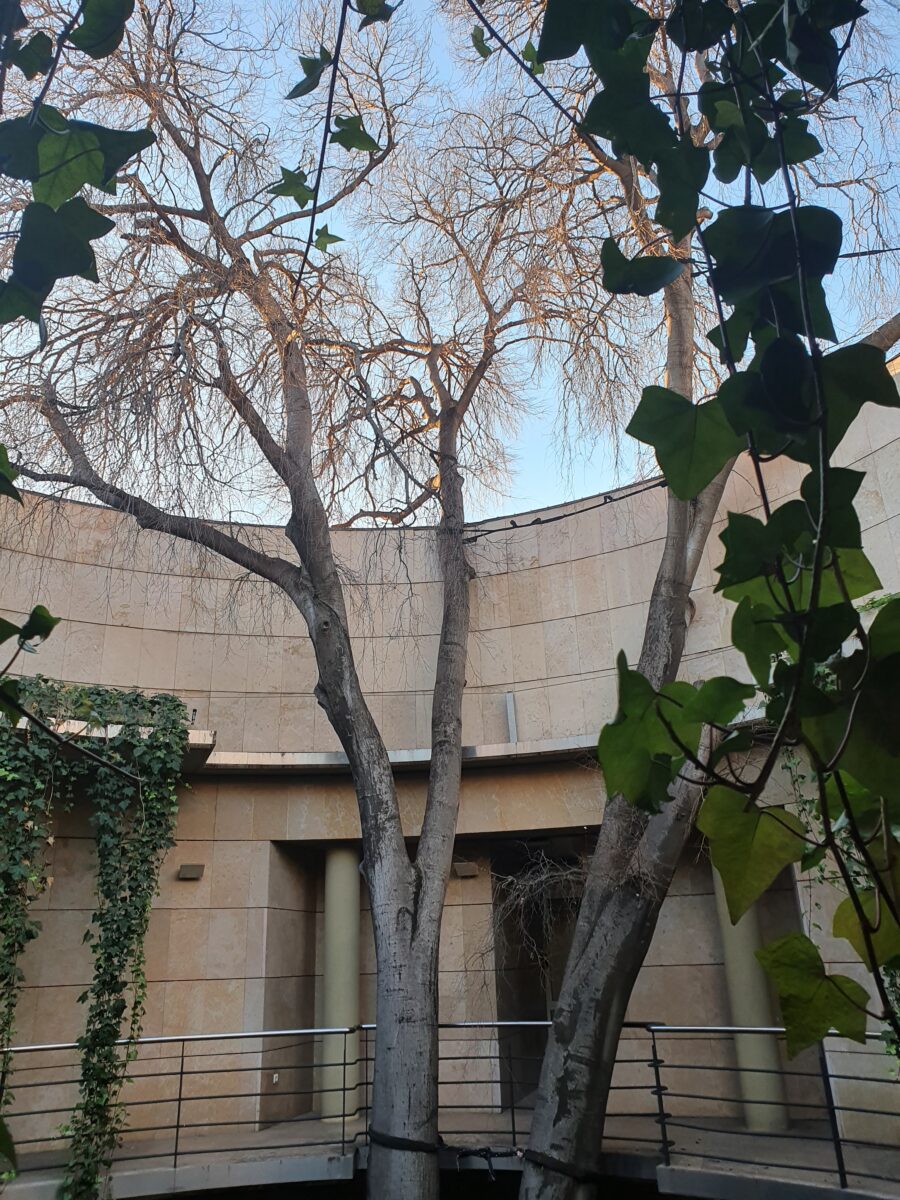
From the Jardí Botànic’s library, Ana Mira and Javi Barrachina, selected the European nettle tree from the circular courtyard of the entrance. For them, it is very representative of their activity as a service. The strong, flexible wood of Celtis australis was used to make field tools.
5. Norfolk Island hibiscus
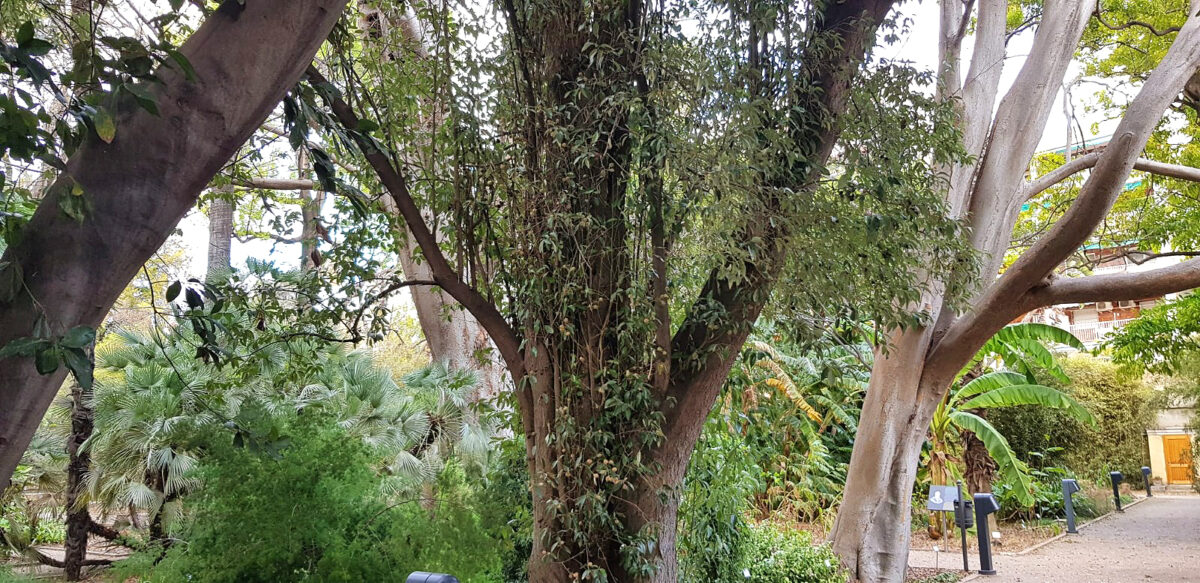
The Norfolk Island hibiscus is one of the favorites of Eva Pastor, biologist and head of the Departament de Cultura i Comunicació del Jardí Botànic. This specimen of Lagunaria patersonii, situated in the central corridor, is also her children’s favorite one.
6. Tipu tree
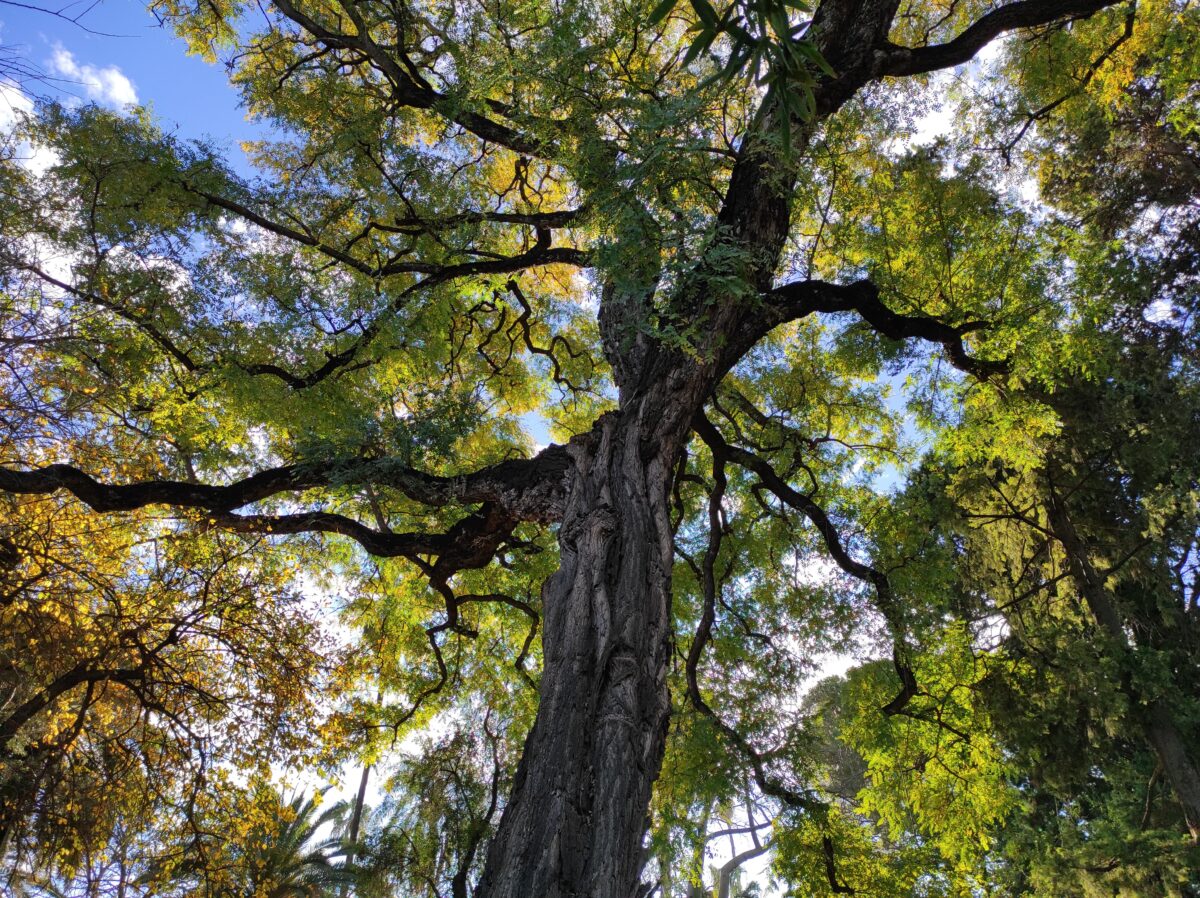
The biologist Anna Nebot updates the Jardí Botànic’s plants inventory. One of her most beloved trees is Tipuana tipu, from the ancient collection. Let’s observe how the sun’s rays pierce the leaves, offering so many shades of greens.
7. Podocarpus macrophyllus
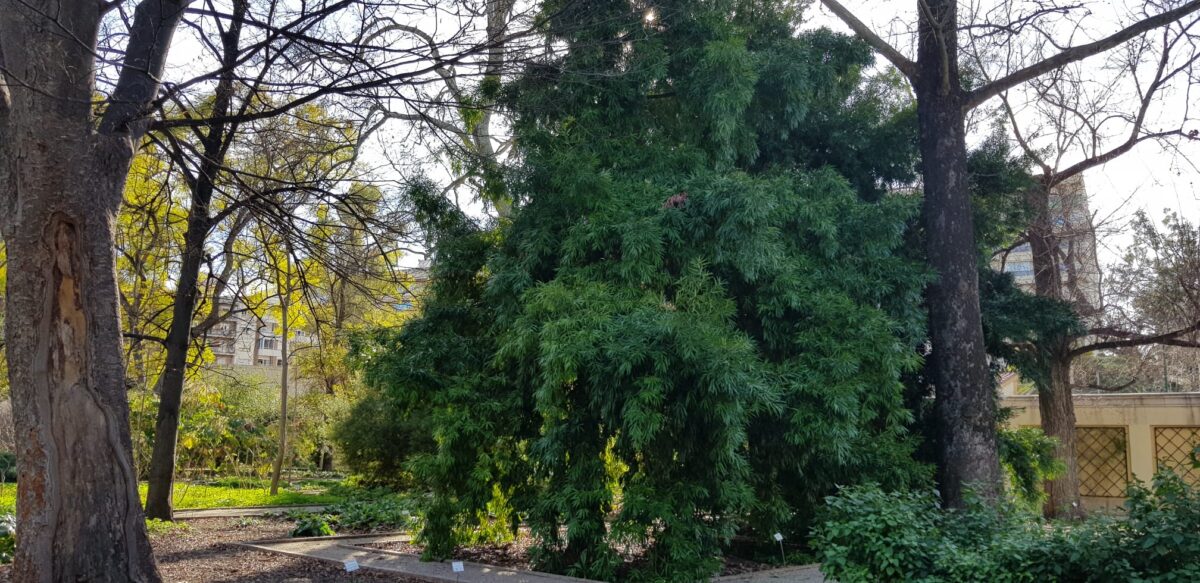
Elisa Caballer, a Departament Cultura i Comunicació del Jardí Botànic biologist, loves two Podocarpus macrophyllus that have grown together, forming a forest thicket. It has a Japanese origin and its small fruits, seeming ‘kodama’ spirits, create a magical effect.
8. Chaste tree
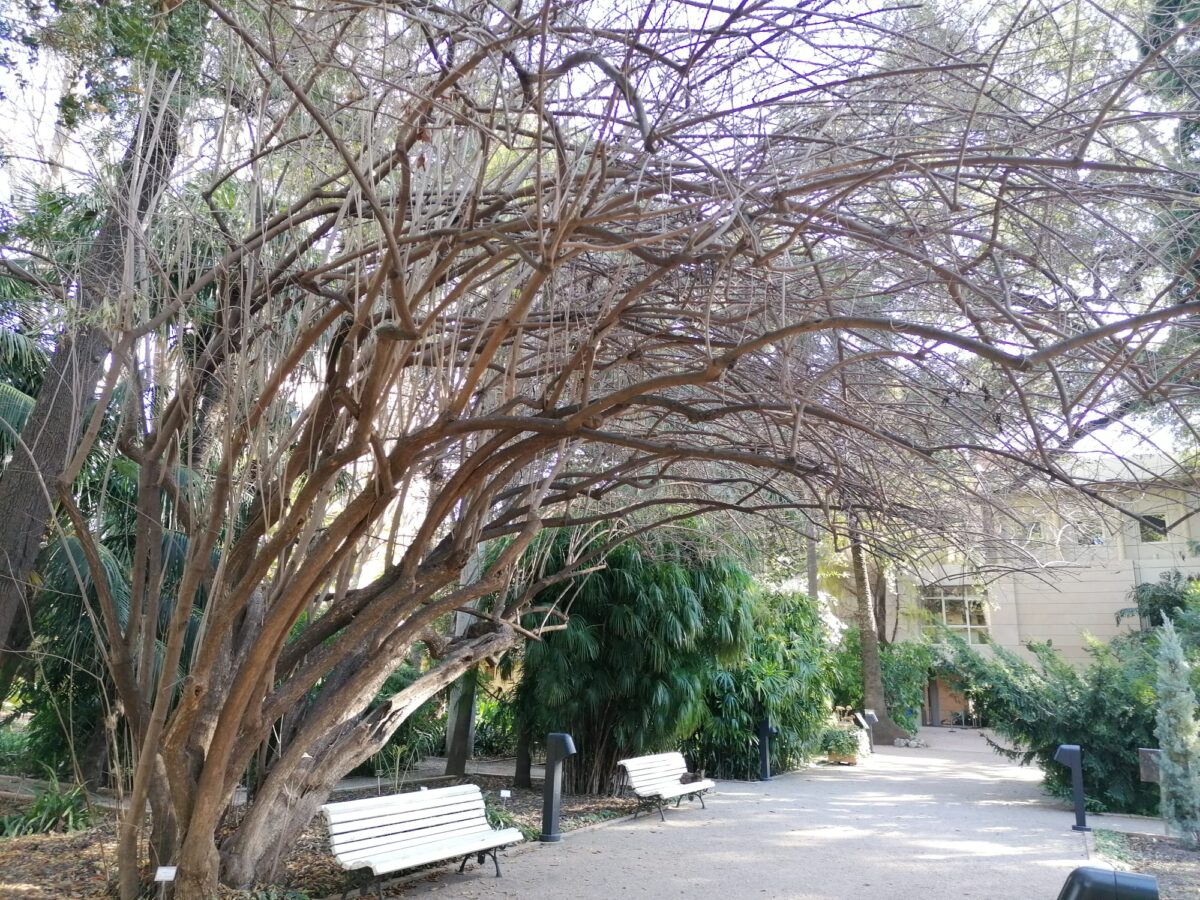
Amparo Ibor, the Jardí Botànic services coordinator, says that the bare Winter branches of Vitex agnus-castus seem to be waiting to sing a lullaby. It is the Chaste tree, a Mediterranean shrub, deciduous with multiple and curios medicinal uses, many of them, linked to gynecology.
9. Oriental plane tree
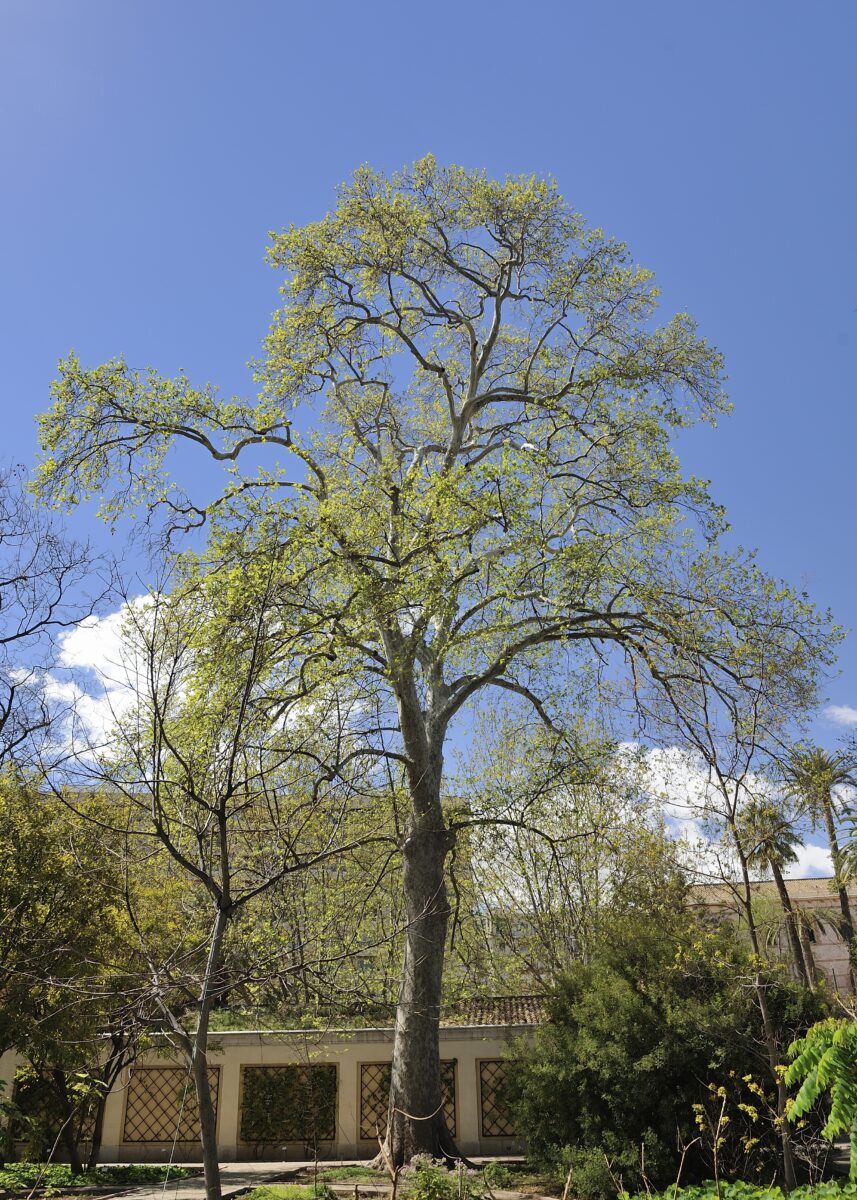
The Oriental plane tree is a classic shading tree for Mediterranean walks and avenues. Luis Blas, an arboriculture specialist, has chosen Platanus orientalis to emphasize its good quality wood, high valued in cabinetmaking.
10. Caucasian elm

Amparo Narbona, Jardí Botànic administrator, keeps a special memory of Zelcova carpinifolia. Many years ago there was a huge rumble caused by the fall of part of this Caucasian elm, which is still alive.
11. Swamp paperbark
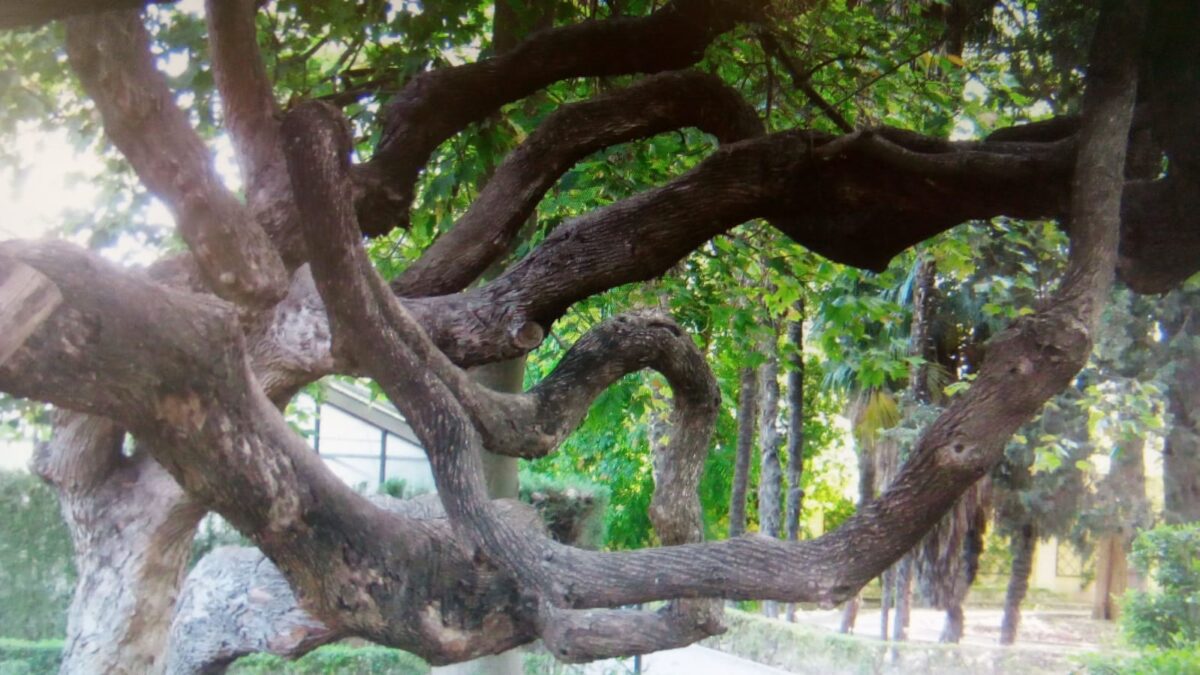
Elena Estrelles, curator of the Banc de Germoplasma del Jardí Botànic, highlights this specimen of Melaleuca ericifolia because is the most twisted of the Jardí. The Swamp paperbark comes from Australia and is very salinity resistant.
12. Floss silk tree
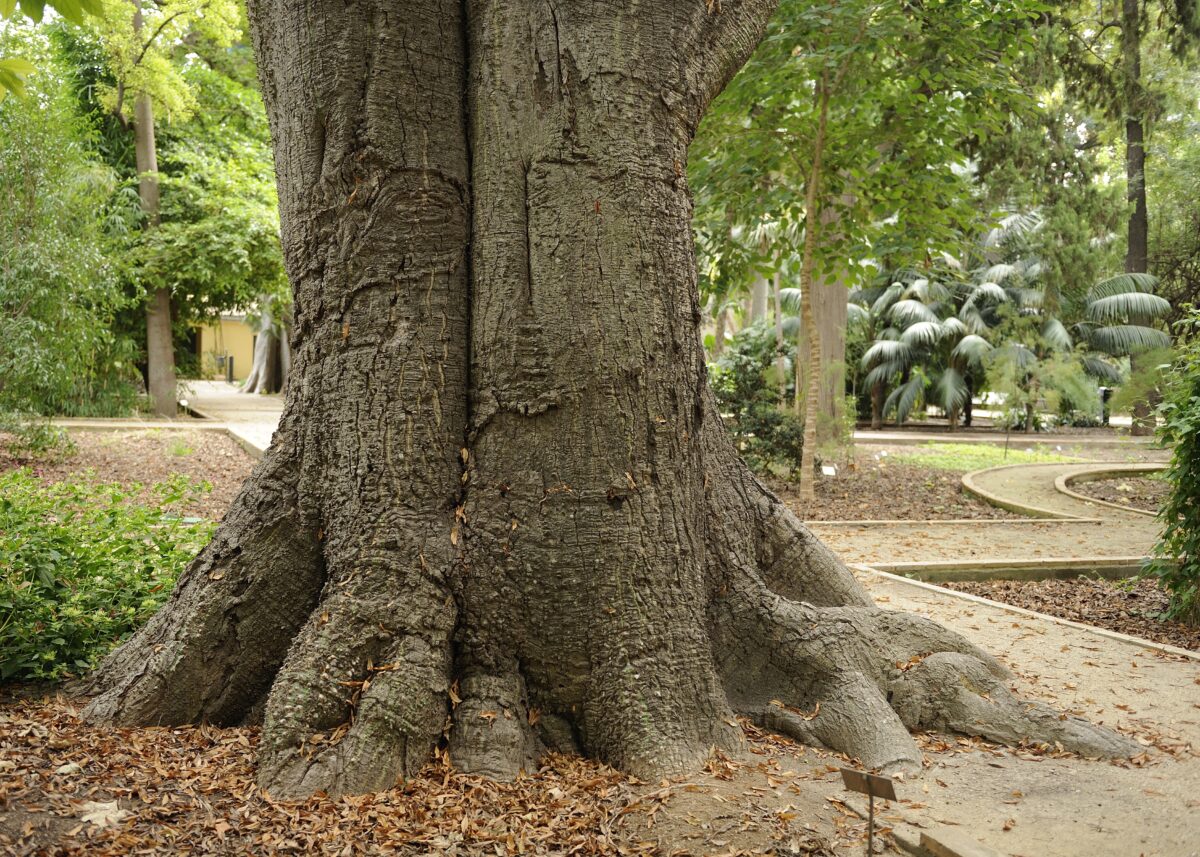
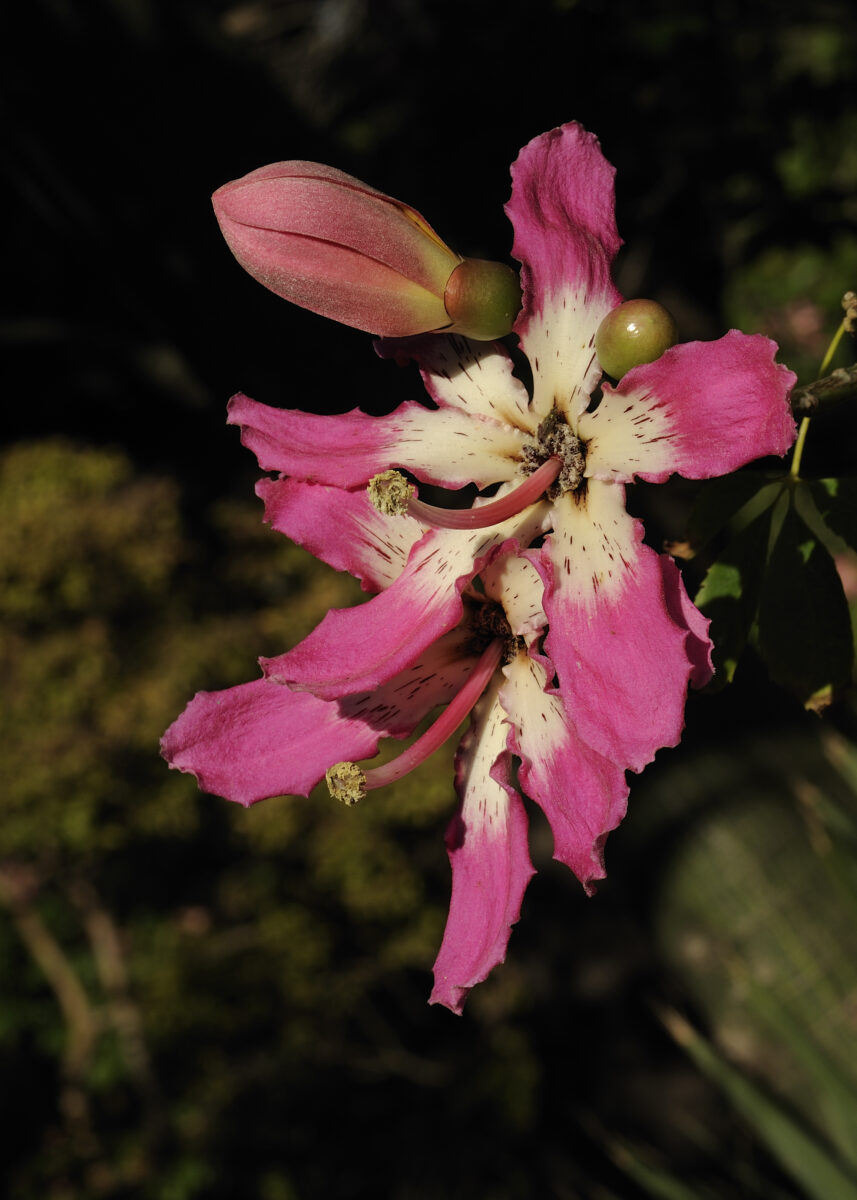
José Plumed, an arboriculture specialist, has it very clear: his favorite tree for the “Dia de l’Arbre”, is the ornamental: Ceiba speciosa. The Floss silk tree can exceed 30 meters; it has woody and conical ulcers on the trunk and makes spectacular pink flowers. Cy-yba means mother tree in Americium.
13. Carob tree
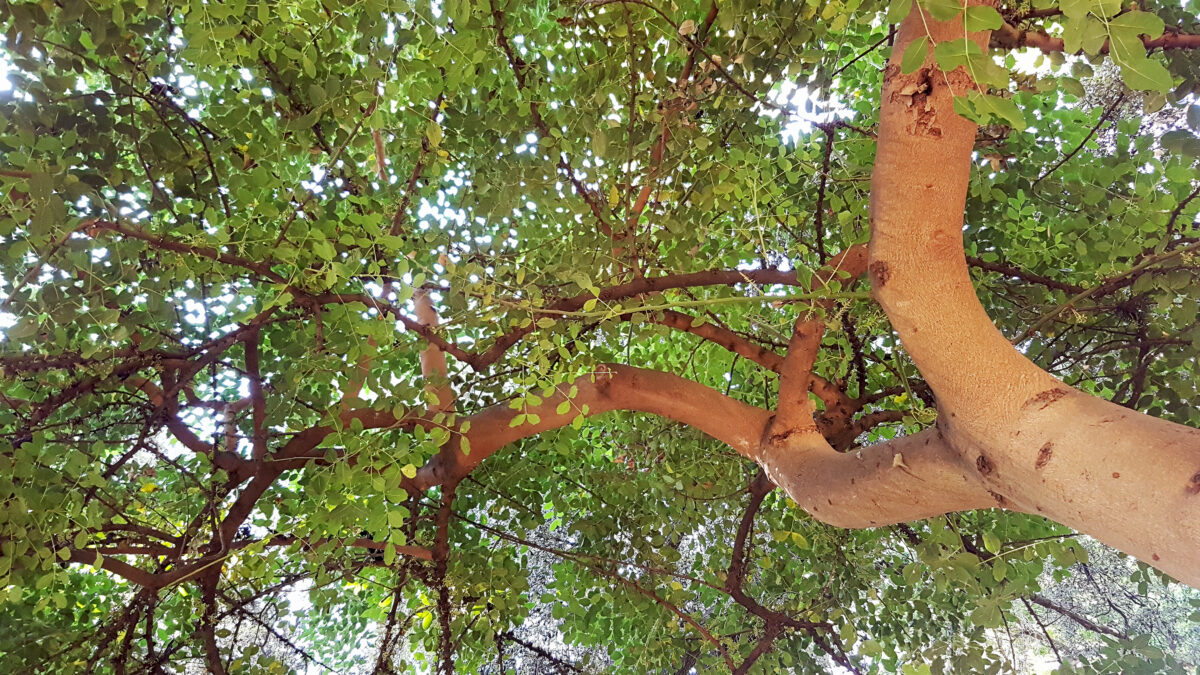
The Carob tree is the most esteemed one by the Jardì Botànic journalist, Maria Josep Picó. Ceratonia siliqua, is a Mediterranean icon, typical of dry landscapes. It’s highly valued for its seed, “garrofí” (which gave name to the carat), and has great potential to combat climate change.
14. Acacia cyclops
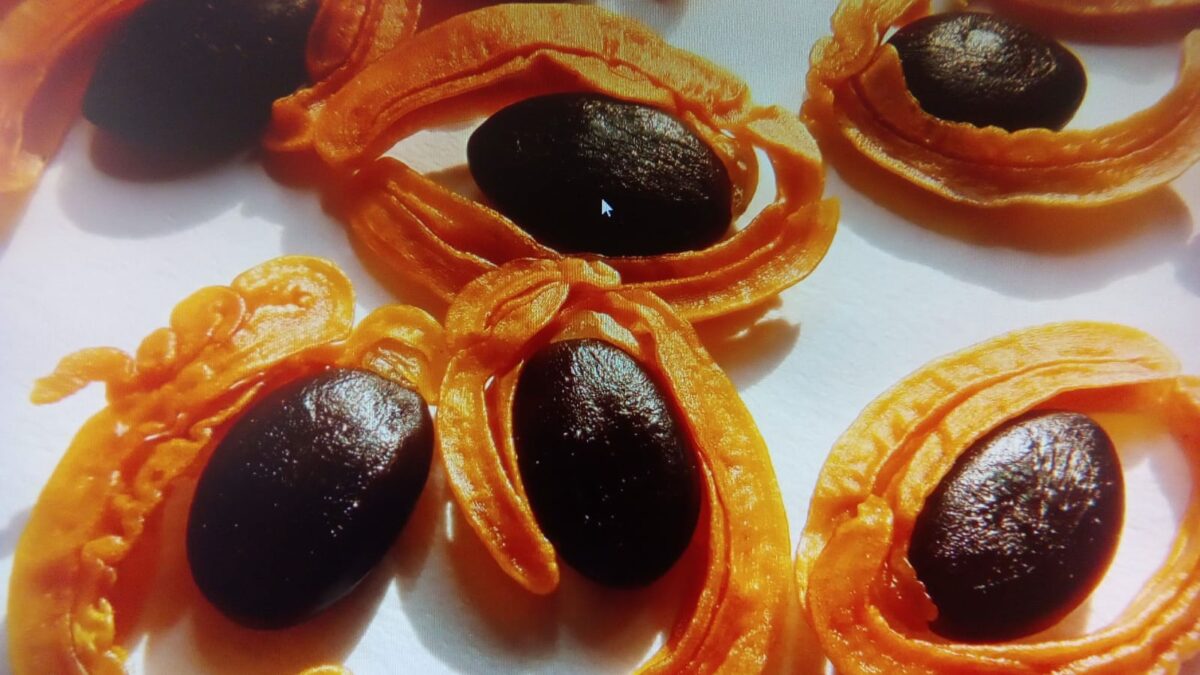
The Banc de Germoplasma del Jardí Botànic shares these Acacia cyclops‘s seeds due to their originality. They look like the eye of cyclops and have a very striking color in order to attract animals and encourage species dispersion.
15. Holm oak
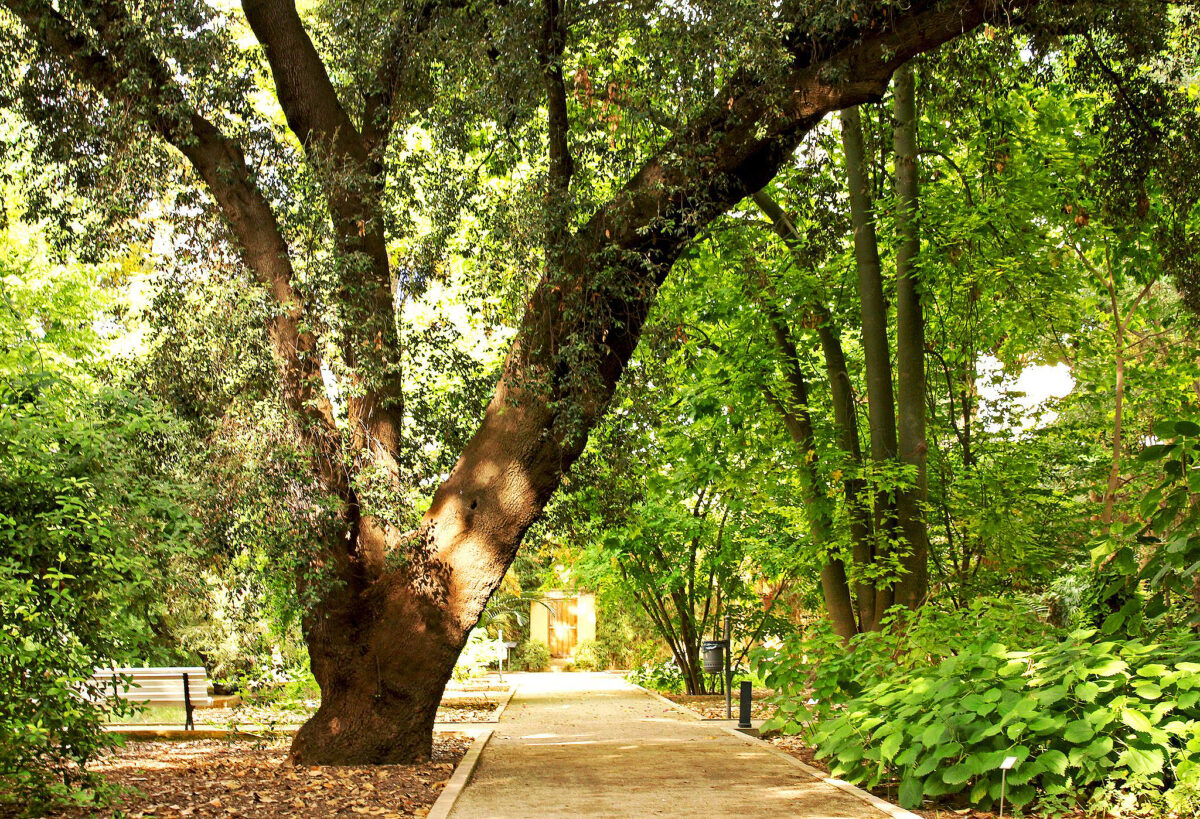
The Holm oak represent the Mediterranean forest presence in the Jardí Botànic de la Universitat de València. Quercus rotundifolia Lam. is the tree chosen by our director, Jaime Gümes. It doesn’t lose the leaf and during the winter stands out in the center of the Botànic, surrounded by deciduous trees.







